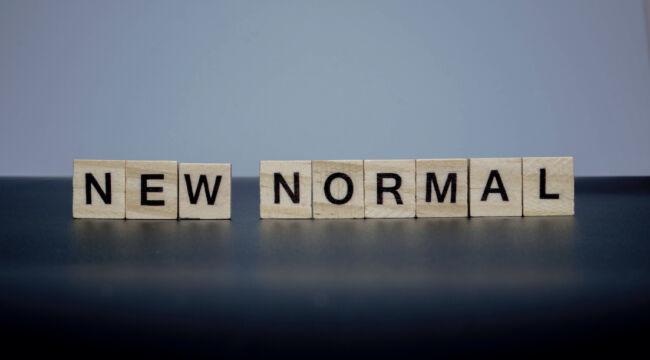Rickards: You May Never See “Normal” Again
Tyler Durden
Fri, 06/05/2020 – 19:20
Authored by James Rickards via The Daily Reckoning,
American cities are burning, there’s a lethal pandemic and we’re in a new Great Depression.
Other than that, everything’s fine…
People often ask me when things will “get back to normal.” Well, the answer could be never (or at least not for a long time).
Germany was not “normal” from 1914–54, for example. Social disorder is like a virus; it goes away eventually but not necessarily soon.
Meanwhile, we’re now in our third month of a national lockdown, with perhaps another month to go, depending on your locality.
Some states and cities are beginning to reopen, but they’re doing it in “phases,” so maybe your hair stylist reopened last week and your favorite restaurant will reopen next week.
The lockdown has certainly been painful for many. Even under the best of circumstances, anxiety levels went up, patience wore thin and tempers flared at trivial things. Cabin fever is a real disease.
Was it all worth it?
I’ve done a deep dive on this and the answer is almost certainly no.
The lockdown did slow the spread of the virus and did save some lives, that’s true. Yet the gains may only be temporary.
“Flattening the curve” does not mean reducing total infections and deaths. It just means stretching them out over a longer period so the hospital system is not overwhelmed.
There were much better solutions for this, including temporary hospitals and sending doctors and nurses from low-infection areas to those areas most in need, like New York City.
The biggest problem with the lockdown was that everyone counted the benefits but no one calculated the costs.
Many may have died and still could die from suicide, drug overdoses, alcoholism, domestic violence and other untreated medical conditions like cancer and heart attacks because patients were afraid to go to hospitals for fear of getting the virus.
In short, the lockdown may end up costing more lives than were saved.
That’s on top of trillions of dollars of lost wealth and lost economic output. That’s what happens when you put doctors in charge of the economy. Next time, it might be a good idea to let a few economic analysts into the room also.
But don’t worry, the optimists say. We’ll see a “V”-shaped recovery once the lockdowns are fully lifted.
You probably know the theory of a “V”-shaped recovery. The idea is that the economy fell sharply in March and April 2020 but it’s ready to bounce back with a record recovery this summer and fall.
The crash is one side of the “V” and the recovery is the other. The result is you end up recovering all of your losses and are ready for new growth from the old levels.
You’ll hear this a lot, but don’t believe it.
Remember “green shoots” in 2009 and 2010? They turned out to be brown weeds. Yes, the economy eventually recovered and the stock market went on to new highs, but it was the weakest recovery in U.S. history and those stock market highs took almost seven years to appear.
Things are much worse now.
Yes, we will hit a bottom this summer. And yes, a recovery will begin. But it will be long and hard.
Output may not get back to 2019 levels until 2022 or later. Unemployment will come down, but it is still expected to be higher than the worst of the 2008 crisis in 2023. The bankruptcies are just starting.
We’ve seen J. Crew, J.C. Penney, Neiman Marcus, Pier 1 Imports and Hertz all file for bankruptcy in recent weeks. There is a long line of name-brand companies right behind them preparing to go bankrupt also.
Not only will we not have a V-shaped recovery, but it will probably be an “L” (down and then sideways).
The 2009–2020 recovery was an “L” where the new trend for growth was 2.2% instead of the post-1980 trend of 3.2%.
Now the new recovery (when it begins) may have output of only 1.9% or less.
When each recovery is weaker than the one before and debt goes up faster than growth, it’s just a matter of time before you go broke — or eventually break out in inflation.
We probably won’t see inflation for a while because inflation has a strong psychological component and right now a deflationary mindset prevails.
That may change — it probably will — but we’re not there at this point.
Meanwhile, people are looking for “safe havens” right now.
Stock and Treasury market behavior can be explained as much by “safe haven” demand as fundamentals. But what happens when the safe haven doesn’t look so safe?
There’s still one place to go — gold.
